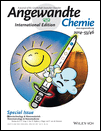Water Encapsulation by Nanomicelles†
We thank the Spanish MICINN and MINECO (CTQ2012-39132 and CTQ2011-22923), the Basque Government (IT520-10), and UPV/EHU (UFI 11/23) for funding. E.J.C. also thanks the MICINN for a “Ramón y Cajal” contract and I.L. thanks the GV for pre- and post-doctoral fellowships. Computational resources and laser facilities from the SGI/IZO-SGIker and i2BASQUE were used for this work. Technical support provided by the Laser Facility of the SGIKER (UPV/EHU, MICINN, GV/EJ, ESF) is also gratefully acknowledged.
Graphical Abstract
Abstract
Reported is the hydration of nanomicelles in the gas-phase using spectroscopic methods and quantum chemical calculations. A fine-tuning of the experimental conditions allowed formation of a propofol trimer and tetramer with a water molecule and to determine the structure of the aggregates. Their electronic and IR spectra were obtained using mass-resolved laser spectroscopy, together with the number of conformational isomers for each stoichiometry. Interpretation of the spectra in the light of high-level calculations allowed determination of the cluster’s structure and demonstration that the trimer of propofol with a water molecule forms cyclic hydrogen-bond networks but, on the other hand, the tetramer is big enough to encapsulate the water molecule inside its hydrophilic core. Furthermore, these hydrated nanomicelles present an unusually high binding energy, thus reflecting their high stability and their capability to trap water inside.





